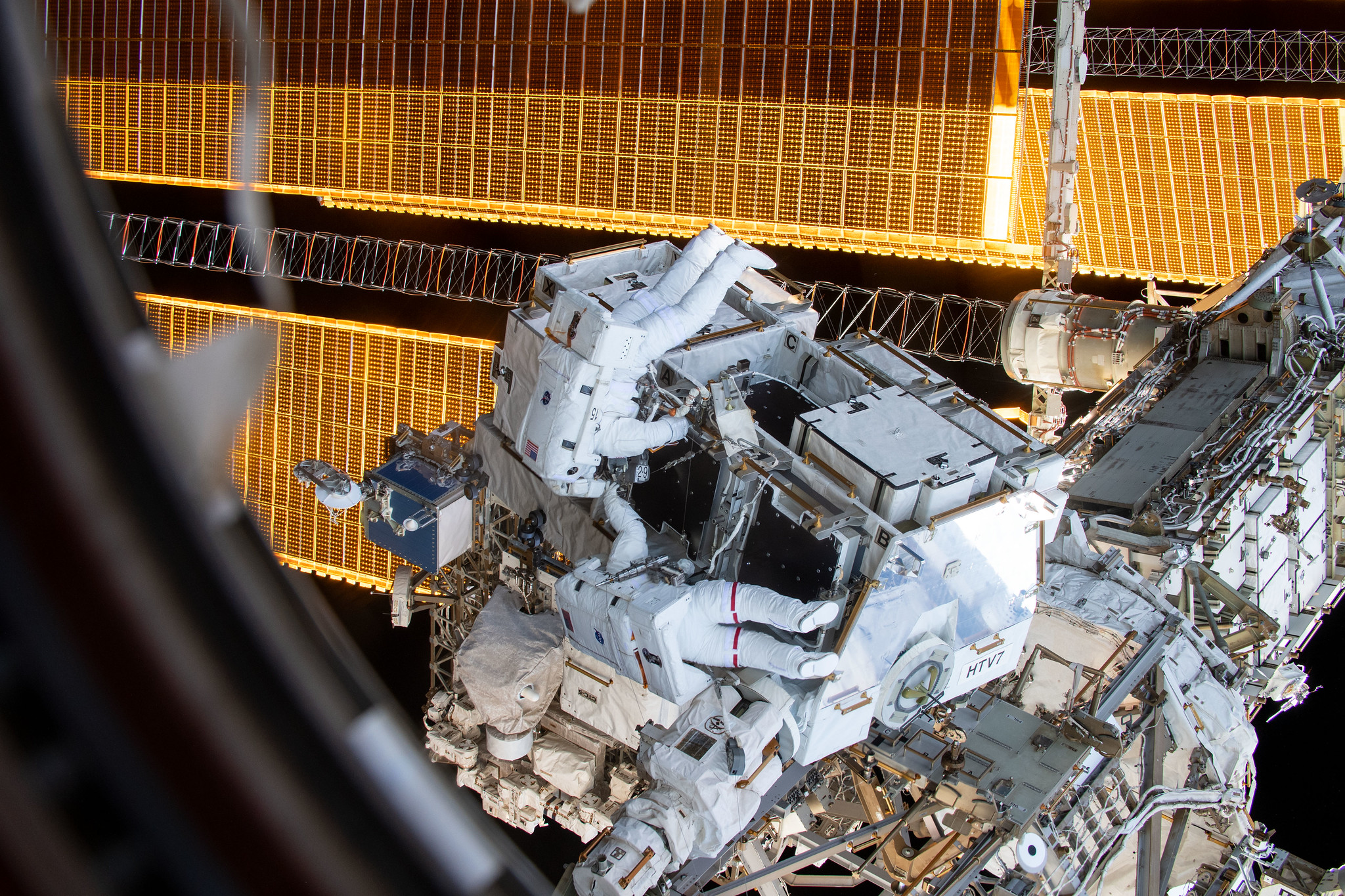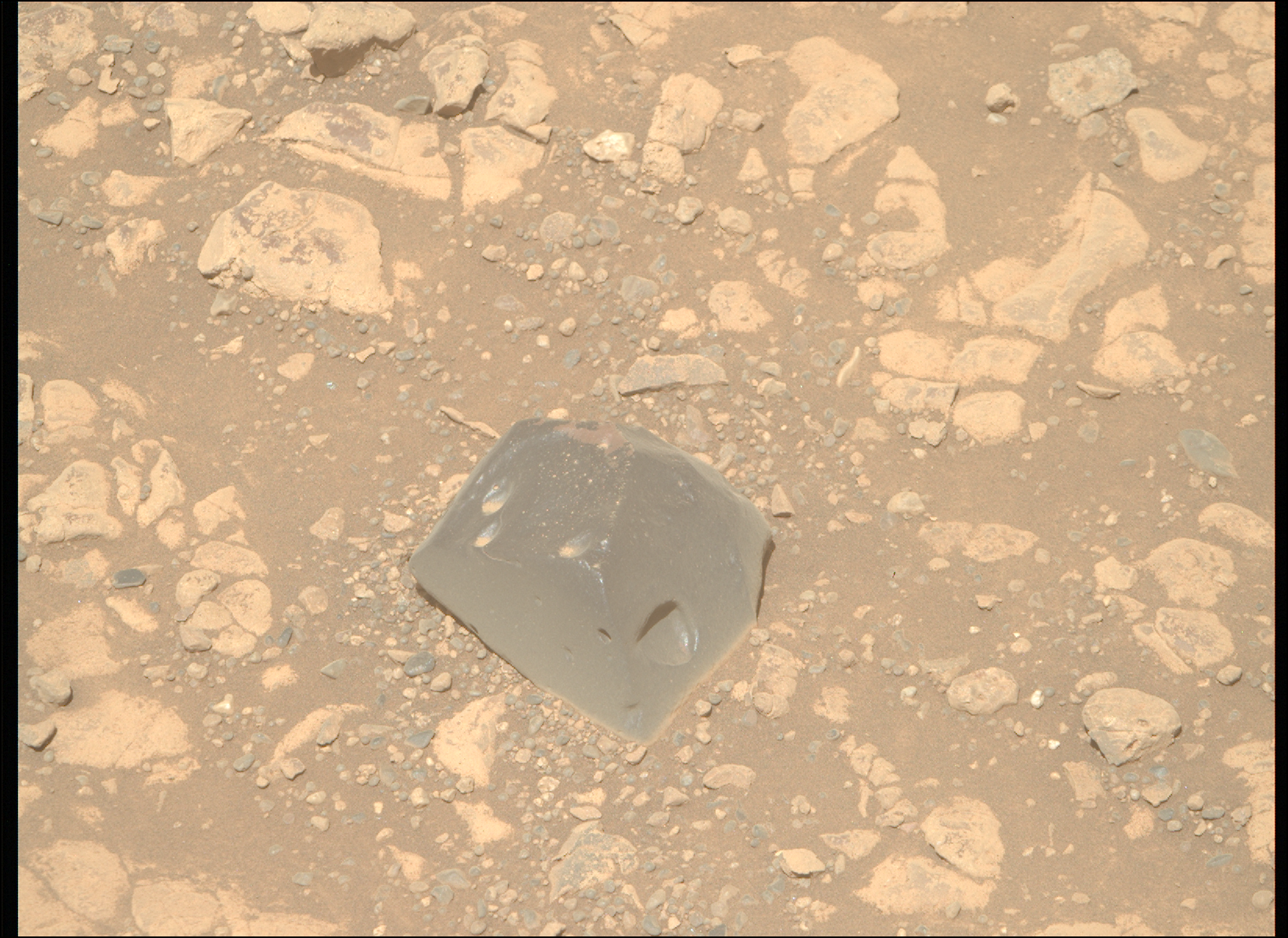ESA/Hubble & NASA, K. Noll This newly reprocessed image released on April 18, 2025, provides a new view of an enormous, 9.5-light-year-tall pillar of cold gas and dust. Despite its size, it’s just one small piece of the greater Eagle Nebula, also called Messier 16. The Eagle Nebula is one of many nebulae in the Milky Way that are known for their sculpted, dusty clouds. Nebulae take on these fantastic shapes when exposed to powerful radiation and winds from infant stars. Regions with denser gas are more able to withstand…
Read MoreAuthor: NeRD
NASA to Cover US Spacewalk 93, Hold Preview News Conference
NASA astronauts work to retrieve batteries and adapter plates from an external pallet during a spacewalk to upgrade the International Space Station’s power storage capacity. Credit: NASA Two NASA astronauts will venture outside the International Space Station, conducting U.S. spacewalk 93 on Thursday, May 1, to complete station upgrades. NASA will preview the upcoming spacewalk during a news conference at 2 p.m. EDT on Thursday, April 24, on the agency’s website from NASA’s Johnson Space Center in Houston. Learn how to watch NASA content through a variety of platforms, including…
Read MoreEarly Career Faculty 2024
1 min read Preparations for Next Moonwalk Simulations Underway (and Underwater) Back to ECF Home Transformational Advanced Energetic Propulsion Omid BeikColorado School of MinesDevelopment of a MW-Scale High-Voltage Multiphase Dual-Rotor Generator and Rectifier for a PMAD in an NEP System Ognjen IlicUniversity of MinnesotaConcept Demonstration of Directed Energy Propulsion with Metasurface Lightsails Kenshiro OguriPurdue UniversityOrigami-inspired Diffractive Sail for Directed Energy Propulsion Thomas UnderwoodUniversity of Texas, AustinStabilized Z-Pinch Fusion Driven Electromagnetic Propulsion Power Systems to Enable Small System Operations in Permanently Shadowed Lunar Regions Manan AryaStanford UniversityLightweight Deployable Solar Reflectors Jessica…
Read MoreDeveloping Oxychalcogenide Membranes for Superconducting Power Transmission
1 min read Preparations for Next Moonwalk Simulations Underway (and Underwater) ECF 2024 Quadchart Yang.pdf Shuolong Yang University of Chicago This effort will leverage the latest developments in superconductors to build a power transmission cable that can operate in the extreme cold temperatures found on the Moon with very low electrical losses. The team will use novel manufacturing techniques to grow alternating layers of FeSe SrTiO3 films onto a substrate and the resulting, superconducting tape can be fashioned into electrical transmission lines. The project will culminate with a demonstration 1-meter-long…
Read MorePower on the Dark Side: Stimulus-Responsive Adsorbents for Low-Energy Controlled Storage and Delivery of Low Boiling Fuels to Mobile Assets in Permanently Shaded Regions
1 min read Preparations for Next Moonwalk Simulations Underway (and Underwater) ECF 2024 Quadchart McGuirk.pdf Christopher McGuirk Colorado School of Mines This project will investigate and develop improved storage methods for the fuels needed to generate electrical power in places where sunlight is not available. The effort will focus on particularly tailored materials called Metal Oxide Frameworks, or MOFs, that can be used to store methane and oxygen. The methane and oxygen can be reacted in a solid oxide fuel cell to generate electricity, and storing them in a MOF…
Read MorePiezoelectric-Based Power Conversion for Lunar Surface Systems
1 min read Preparations for Next Moonwalk Simulations Underway (and Underwater) ECF 2024 Quadchart Boles.pdf Jessica Boles University of California, Berkeley This project will develop piezoelectric-based power conversion for small power systems on the lunar surface. These piezoelectric systems can potentially offer high power density to significantly reduce size, weight, and cost. They can also offer high efficiency as well as resistance to the extreme lunar environment with its expected prolonged exposure to extreme cold and radiation. The effort will build and test prototype piezoelectric DC-to-DC power converters and DC-to-DC…
Read MoreLightweight Deployable Solar Reflectors
1 min read Preparations for Next Moonwalk Simulations Underway (and Underwater) ECF 2024 Quadchart Arya.pdf Manan Arya Stanford University This grant will design and develop lightweight, low-cost modular solar reflectors that can be stowed for transport in a compact volume. These reflectors can potentially be used to reflect and concentrate sunlight into a permanently shadowed area of the Moon where it could power photovoltaics. These reflectors could also potentially be used for concentrated photovoltaics for deep-space missions, solar thermal propulsion, or for thermal mining. The team will use recently developed…
Read MoreApollo 11 astronaut Neil Armstrong’s gold Omega moonwatch sells for record $2.2M at auction
A new record has been set for the most paid at auction for an astronaut’s timepiece. The 18-karat gold Omega Speedmaster that was presented to Neil Armstrong four months after he became the first person to walk on the moon in 1969, sold for a hammer price of $1.7 million on Thursday (April 17). With the auction house’s fees included, the total price for the chronograph was $2,187,500 — $280,546.25 more than the previous record set in 2022 by a nearly-identical gold Speedmaster gifted to Mercury, Gemini and Apollo astronaut…
Read MoreNASA developing 1st-ever space-based quantum sensor for gravity measurements
Scientists are developing an advanced quantum sensor for low Earth orbit that can detect the tiniest tremors in Earth’s gravity. These barely perceptible shifts — caused by moving water, tectonic activity or shifting rock — offer clues about what lies beneath the planet’s surface. The new device could allow the mapping of underground features like aquifers and mineral deposits — crucial data for navigation, resource management and national security, its developers say. You may like “We could determine the mass of the Himalayas using atoms,” Jason Hyon, chief technologist for…
Read MoreOrigins Uncertain: ‘Skull Hill’ Rock
Explore This Section Perseverance Home Mission Overview Rover Components Mars Rock Samples Where is Perseverance? Ingenuity Mars Helicopter Mission Updates Science Overview Objectives Instruments Highlights Exploration Goals News and Features Multimedia Perseverance Raw Images Images Videos Audio More Resources Mars Missions Mars Sample Return Mars Perseverance Rover Mars Curiosity Rover MAVEN Mars Reconnaissance Orbiter Mars Odyssey More Mars Missions Mars Home 2 min read Origins Uncertain: ‘Skull Hill’ Rock Written by Margaret Deahn, Ph.D. Student at Purdue University Last week, NASA’s Mars 2020 rover continued its journey down lower ‘Witch…
Read More



